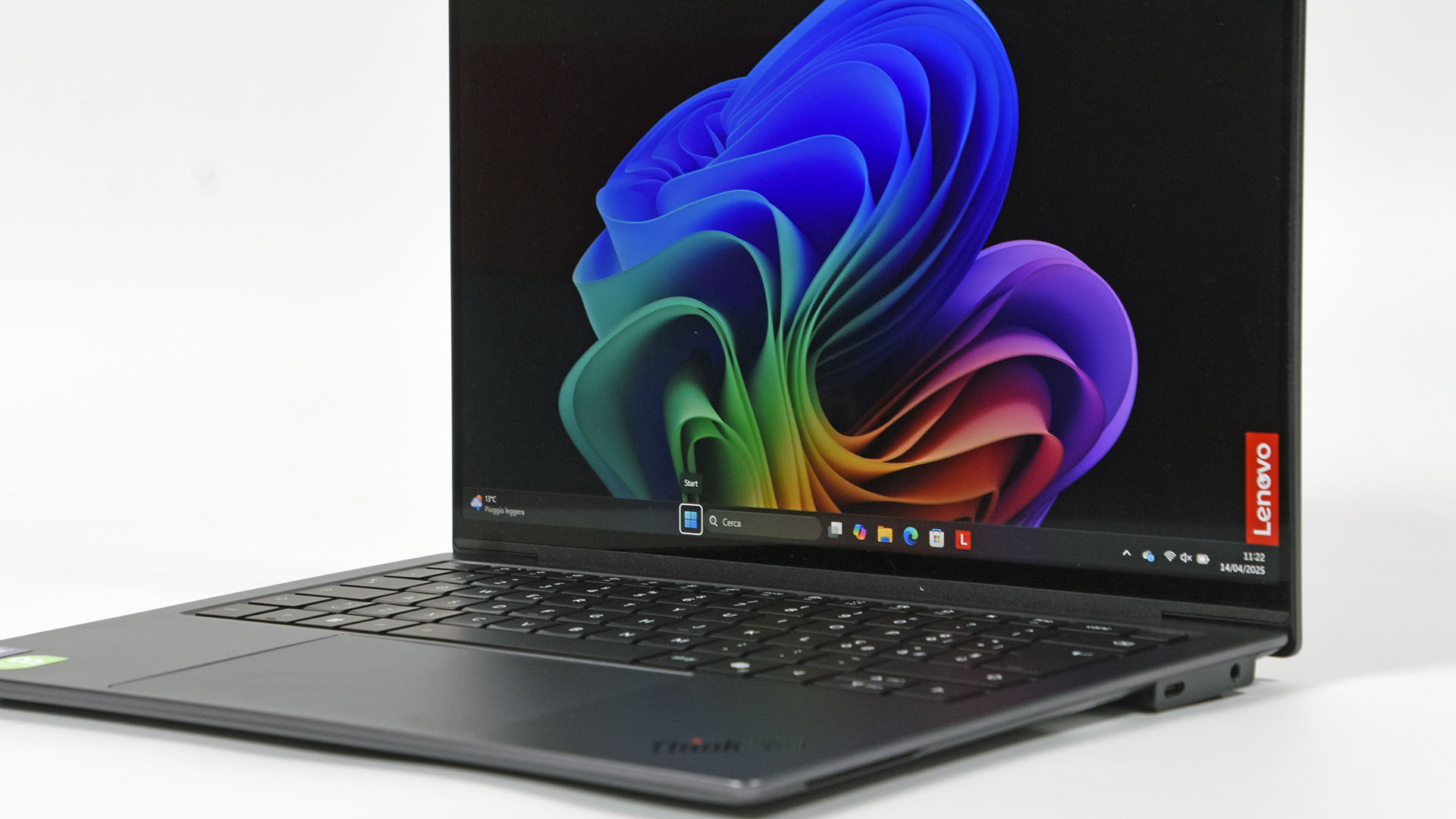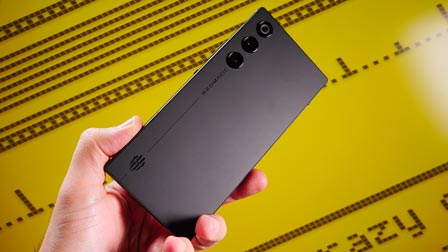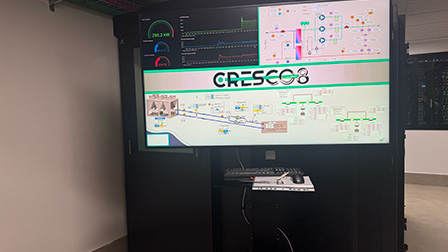PureVideo: la soluzione NVIDIA per il video

NVIDIA abilita le funzionalità del video engine integrato nelle schede video NV40, introducendo la tecnologia PureVideo. Minore occupazione del processore e qualità di riproduzione superiore
di Paolo Corsini pubblicata il 21 Dicembre 2004, alle 09:12 nel canale Schede VideoNVIDIA
Dopo aver introdotto per la prima volta nel chip NV40, lo scorso mese di Aprile, il proprio video engine, NVIDIA ha ufficialmente annunciato la tecnologia Pure Video; con questo nome il produttore americano ingloba tutte le funzionalità video implementate nelle architetture NV4x, finalmente da oggi disponibili per gli appassionati
In estrema sintesi, PureVideo permette di diminuire la percentuale di occupazione del processore durante la riproduzione di contenuti video, oltre che migliorare nel complesso la qualità dei flussi video che vengono riprodotti dal sistema.
Al momento attuale Pure Video supporta per gli standard NTSC (nord America e Asia) e PAL (Europa) gli stesis standard, fatta eccezione per l'assenza di Inverse 3:2 Pulldown e 3:2 Bad Edit Correction per il formato PAL. Queste limitazioni verranno corrette nei prossimi mesi, in quanto NVIDIA sta lavorando al supporto via driver da implementare in future revision dei driver Forceware.
Da segnalare che le schede basate su architettura NV40 AGP e PCI Express, quindi i modelli GeForce 6800 GT e GeForce 6800 Ultra, non supportano accelerazione hardware nelle operazioni di decoding di flussi video WMV9. Di conseguenza, con queste schede video la percentuale di occupazione del processore nella visione di video WMV9 sarà più elevata rispetto ad altre architetture video NVIDIA quali, ad esempio, quelle GeForce 6600 GT.
Di seguito è riportato il comunicato stampa ufficialmente rilasciato da NVIDIA:
Press release - NVIDIA PUREVIDEO TECHNOLOGY BRINGS HOME-THEATRE QUALITY VIDEO TO THE PC
FOR IMMEDIATE RELEASE:NVIDIA PUREVIDEO TECHNOLOGY BRINGS HOME-THEATRE QUALITY VIDEO TO THE PC
Hardware/Software Technology Combination Delivers Crisp, Fluid and Vibrant Video Playback to Multimedia Desktop and Notebook PCsLONDON — DECEMBER 20TH, 2004 — NVIDIA Corporation (Nasdaq: NVDA), a worldwide leader in graphics and digital media processors, today announced NVIDIA® PureVideo™ technology, a combination of hardware and software technologies designed to raise the bar on the video capabilities of today’s desktop and notebook PCs. The addition of PureVideo technology to the GeForce™ 6 Series of graphics processing units (GPUs) allows for accelerated playback of MPEG-2 and high-definition (HD) video content at home-theatre levels of quality, resulting in crisp, vibrant and stutter-free video on any display.
Enabled by a dedicated, programmable video-processing engine found on the Company’s award-winning GeForce 6 Series GPUs, PureVideo technology eliminates the trade-off in quality traditionally associated with video on the PC by executing an advanced set of algorithms typically found in high-end consumer electronics devices. PureVideo technology eliminates the need for separate hardware or chipsets and takes the load off the PC’s multi-purpose central processing unit (CPU) to deliver to consumers, high-quality video playback at resolutions up to 720p and 1080i.
“The personal computer has never been well-regarded for its abilities to deliver high-quality video playback,” said Dan Vivoli, executive vice president of marketing at NVIDIA. “The GeForce 6 Series with PureVideo technology finally merges the flexibility of the PC platform with the capabilities of high-end consumer electronics to give consumers more choice over how they experience video.”
Recent analyst reports cite that the adoption of HD is on the rise, with an estimated 60 million households expected to embrace high-definition devices by 2008 . Similarly, 33.5 million US households are expected to adopt digital video recorder (DVR) technology in the same time period .
Key features of PureVideo include:
- High-definition MPEG-2 Hardware Acceleration. A dedicated 16-way vector processor enables smooth playback of HD video with minimal CPU usage.
- WMV High-definition Hardware Acceleration. Programmable support of the newest format enabled by Microsoft Windows® Media Player and Windows XP Media Center Edition 2005 for fluid playback of WMV and WMV HD content.
- High-quality Real-time Video Recording. An advanced motion-estimation engine makes it possible to record in real-time without a loss in quality.
- Spatial / Temporal Adaptive De-Interlacing. Experience interlaced content from satellite, cable, and DVD feeds in full detail and without jagged edges or artefacts.
- 3:2 Pull-down Correction and “Bad Edit” Correction . Restore video to its original 24fps film format to experience a crystal clear picture, frame after frame.
- Flicker-free Multi-stream Scaling. High quality 4-tap by 5-tap scaling maintains image detail, even when scaling a small video to a large area of the screen.
- Display Gamma Correction. Automatic format detection adjusts the colour quality of video playback so that it is not too dark, overly bright or washed out, regardless of the display.
To maximise the complete PureVideo experience, NVIDIA has released the NVIDIA DVD Decoder. The software decoder—the first software decoder to receive "Designed for Media Center" certification from Microsoft — unleashes the broad range of PureVideo technology features for DVD and recorded video playback and works with both Windows® Media Player and Microsoft Windows XP Media Center Edition 2005. The Company has also released an update for its ForceWare™ software unified driver architecture to enable the functionality of the PureVideo technology algorithms. For additional information, or to download a free trial version of the NVIDIA DVD Decoder, please visit http://eu.nvidia.com/page/home
“The programmability of the PureVideo engine gives us more flexibility as a development platform as we are able to support key new features designed to enhance video playback, such as motion estimation, to deliver a competitive advantage to our products,” said Lewis Liaw, president of Ulead Systems, North America. “With Ulead’s products and NVIDIA GeForce 6 Series GPUs, consumers have a cost-effective solution for creating high-quality video.”
Graphics cards based on NVIDIA GeForce 6 Series GPUs with PureVideo technology are available today from leading add-in card vendors, system builders, and major OEMs worldwide. For more information about PureVideo technology or the GeForce 6 Series, please visit http://eu.nvidia.com/page/home
About NVIDIA
NVIDIA Corporation is a worldwide leader in graphics and digital media processors. The Company's products enhance the end-user experience on consumer and professional computing devices. NVIDIA GPUs (graphics processing units), MCPs (media and communications processors) and WMPs (wireless media processors) have broad market reach and are incorporated into a variety of platforms, including consumer and enterprise PCs, notebooks, workstations, PDAs, mobile phones and video game consoles. NVIDIA is headquartered in Santa Clara, California and employs more than 2,000 people worldwide. For more information, visit the Company’s Web site at http://eu.nvidia.com/page/homeCertain statements in this press release including, but not limited to, statements as to the benefits, uses, capabilities and performance of GeForce 6200 GPUs, NVIDIA TurboCache technology and NVIDIA PureVideo technology and expected dates of availability are forward-looking statements that are subject to risks and uncertainties that could cause results to be materially different than expectations. Such risks and uncertainties include, but are not limited to, delays in ramping new products into production, manufacturing defects, incompatibility of technologies, reliance on third-party manufacturers, general industry trends including cyclical trends in the PC and semiconductor industries, the impact of competitive products and pricing alternatives, changes in industry standards and interfaces, our dependence on third-party developers and publishers and other risks detailed from time to time in the NVIDIA reports filed with the Securities and Exchange Commission including its Form 10-Q for the quarter ended October 24, 2004. These forward-looking statements speak only as of the date hereof. NVIDIA disclaims any obligation to update these forward-looking statements.










 Lenovo ThinkPad X9-14 Aura Edition: leggero e sottile per i professionisti
Lenovo ThinkPad X9-14 Aura Edition: leggero e sottile per i professionisti REDMAGIC 10 Air: potenza da gaming in un corpo leggero e moderno. Recensione
REDMAGIC 10 Air: potenza da gaming in un corpo leggero e moderno. Recensione Insta360 X5: è sempre la regina delle action cam a 360 gradi. Recensione
Insta360 X5: è sempre la regina delle action cam a 360 gradi. Recensione Il lander della missione sovietica Kosmos-482 diretta verso Venere potrebbe rientrare sulla Terra nelle prossime settimane
Il lander della missione sovietica Kosmos-482 diretta verso Venere potrebbe rientrare sulla Terra nelle prossime settimane Il satellite militare russo Kosmos-2553 potrebbe essere fuori controllo
Il satellite militare russo Kosmos-2553 potrebbe essere fuori controllo Apple Watch: i modelli migliori da comprare ora. Series 10 al prezzo più basso di sempre a 379€ e Watch SE a 219€
Apple Watch: i modelli migliori da comprare ora. Series 10 al prezzo più basso di sempre a 379€ e Watch SE a 219€ Leatt CeraMAG, ultraleggeri e resistenti per pedalate off-road senza compromessi
Leatt CeraMAG, ultraleggeri e resistenti per pedalate off-road senza compromessi Tutte le svendite Amazon weekend: super smartwatch a 49€, portatili con tanta RAM, iPhone, Kobo e molto altro
Tutte le svendite Amazon weekend: super smartwatch a 49€, portatili con tanta RAM, iPhone, Kobo e molto altro Schede video in offerta su Amazon: occhio alla RTX 5060 Ti da 429€, ma anche 5070, 5080, Radeon RX 9070 e 9070 XT e molte altre
Schede video in offerta su Amazon: occhio alla RTX 5060 Ti da 429€, ma anche 5070, 5080, Radeon RX 9070 e 9070 XT e molte altre CMF Phone 1 torna a 189€, le nuove Buds 2 a 39€: scelte intelligenti a prezzi super
CMF Phone 1 torna a 189€, le nuove Buds 2 a 39€: scelte intelligenti a prezzi super Bello, elegante, originale: impossibile trovare uno smartwatch migliore di CMF Watch Pro 2, in super sconto a 49€
Bello, elegante, originale: impossibile trovare uno smartwatch migliore di CMF Watch Pro 2, in super sconto a 49€ Il super ebook reader Kobo Sage scende al minimo storico, solo 244€, anche in versione con custodia
Il super ebook reader Kobo Sage scende al minimo storico, solo 244€, anche in versione con custodia Solo 10 pezzi rimasti: 808€ il super portatile Lenovo con 40GB di RAM, Core i7, 1TB SSD, Thunderbolt 4
Solo 10 pezzi rimasti: 808€ il super portatile Lenovo con 40GB di RAM, Core i7, 1TB SSD, Thunderbolt 4 Tanti iPhone 16 in sconto su Amazon: torna il Pro Max a -190€, ma ci sono anche i Pro e i 16 128GB in tutti i colori
Tanti iPhone 16 in sconto su Amazon: torna il Pro Max a -190€, ma ci sono anche i Pro e i 16 128GB in tutti i colori Intel fa retromarcia: Intel Capital non diventerà indipendente
Intel fa retromarcia: Intel Capital non diventerà indipendente Phanteks Evolv X2: l'iconico case cambia e mette tutto in mostra
Phanteks Evolv X2: l'iconico case cambia e mette tutto in mostra Grizzly Lake: Intel porterà chip fino 32 core sulle automobili?
Grizzly Lake: Intel porterà chip fino 32 core sulle automobili?



















21 Commenti
Gli autori dei commenti, e non la redazione, sono responsabili dei contenuti da loro inseriti - infoo meglio, che risulti il + utilizzato....
Cioè...io che spendo 400€ voglio il TOP del momento in TUTTO con tutte le implementazioni possibili
Mentre uno che spende 190€ nn ha il top nei giochi ma ha tutte le implementazioni del cip N40
Perchè....
Chi compra una scheda tipo 6800gt o ultra difficilmente la abbinerà a un processore lento, quindi di occupazione del processore per riprodurre un dvd o un wmp direi che non si dovrebbero preoccupare..
Oltre al fatto che potrebbero anche mettera qualcosa in più a vantaggio di codec di compressione molto più usati...
ATI lo ha fatto da anni
Da certi commenti pare quasi che sia un problema definitivo... se leggete dicono che è un semplice problema di drivers che verrà risolto presto...
veramente, loro dicono che il problema di driver riguarda l' Inverse 3:2 Pulldown e 3:2 Bad Edit Correction per il formato PAL nelle schede 66xx, non che prossimamente verrà implementata la decodifica nelle schede 68xx
Devi effettuare il login per poter commentare
Se non sei ancora registrato, puoi farlo attraverso questo form.
Se sei già registrato e loggato nel sito, puoi inserire il tuo commento.
Si tenga presente quanto letto nel regolamento, nel rispetto del "quieto vivere".